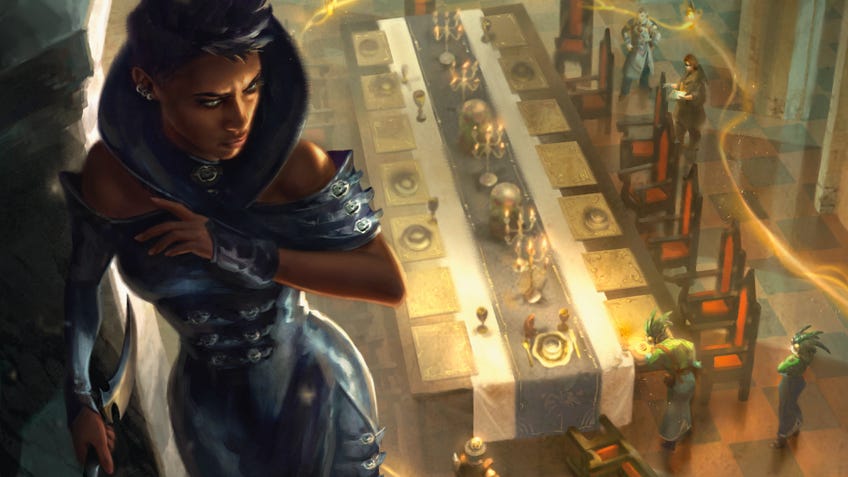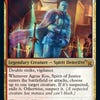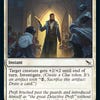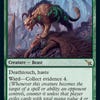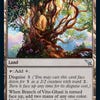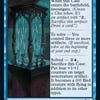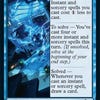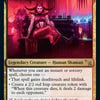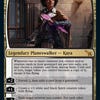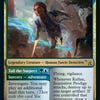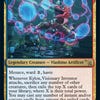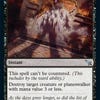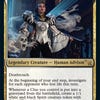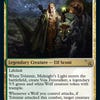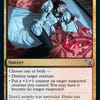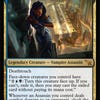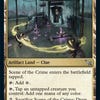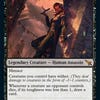Murders at Karlov Manor is a detective’s dream, and a delight for Magic: The Gathering players
Whodunit?
Murders at Karlov Manor is the first proper Magic: The Gathering set of 2024. Sure, we got Ravnica Remastered not too long ago, but given its somewhat underwhelming nature and the fact that it was just reprints, it’s hard to consider that the true beginning of a new year. Thankfully, for as middling as Ravnica Remastered was, it helps Murders at Karlov Manor to shine all the brighter.
‘Shine’ might not be the right word, as it’s filled from common to mythic rare with fairly dark cards and mechanics, but you get the gist. Murders at Karlov Manor keeps us on Ravnica, but this time there are all sorts of twisted conspiracies in play. It’s an interesting tweak to the usual plane-wide political chaos that tends to rule our visits to the plane of the guilds that most players use to define MTG’s colour combinations.
It’s a return to more than just Ravnica, as well. Murders at Karlov Manor’s mechanics are all very familiar, even though most of them are technically new. That’s not a bad thing, as some of these mechanics were in desperate need of a few new cards - especially for Commander players who’ve been holding out for some fresh options for their decks.
The only returning mechanic is Investigate, which allows you to create clue tokens. While not as innately powerful as something like a treasure token, they are incredibly useful in the right decks. Each clue is an artifact that you can sacrifice if you pay two mana, and doing so allows you to draw a card. You can do that at any time, making them useful in a lot of decks.
The mix of mechanics in Murders at Karlov Manor is not only deeply thematic, but also rather entertaining.
A new mechanic is Collect Evidence. This is one of those mechanics that can be triggered in a number of ways, but the short version of it is that a Collect Evidence trigger will have a number attached to it; you’ll need to exile cards from your graveyard to hit that number with their total mana value. So if you’ve got Collect Evidence 5, you could exile a two-mana and three-mana card, for example.
There’s then Suspect, which changes the abilities of a creature card. Some cards can work with suspects in interesting ways. When you suspect a card, it grants the card Menace - meaning it can only be blocked by two or more creatures - but it also makes it unable to block. It’s a unique trade-off that adds a lot of potential strategic options to any given choice.

The next two mechanics are both similar to old mechanics, and really come as a pair. Disguise and Cloak are very similar to Morph and Manifest. A card with Disguise can be cast facedown for three mana as a colourless 2/2 with Ward 2, and can be flipped face-up at any time for its mana cost. Cloak, on the other hand, tends to be done to cards, rather than something cards themselves will have. It lets you effectively disguise a card, but that can be a card that’s not a creature - which means you might end up cloaking a land that can’t be turned over, as you can only do so with creatures.
Nothing about Murders at Karlov Manor really rewrites anything about Magic: The Gathering, but it’s a very well-designed set nonetheless.
The last mechanic is, in fact, a whole new card type: Case. Cases look similar to sagas, and are also enchantments, but that’s where the similarities end. Each case has multiple stages; you need to do specific things to solve them, and they’ll progressively grant you bigger benefits.
Take Case of the Locked Hothouse, a four-mana green case. Once it’s in play, you can play an additional land on each of your turns, and that stays true even once solved. To solve this particular case, you just need to control seven or more lands. Upon solving the case, it gains “You may look at the top card of your library any time, and you may play lands and cast creature and enchantment spells from the top of your library.” So you can upgrade these cards by building decks that help you solve them.
All in all, the mix of mechanics in Murders at Karlov Manor is not only deeply thematic - maybe in the most obvious way we’ve seen in recent sets - but also rather entertaining. Each one is familiar enough that long-term players will be able to grasp them quickly, but not so simple that they feel rehashed. We’re especially glad to see more facedown shenanigans in play here, because it helps MTG gain a modicum of the Yu-Gi-Oh! experience of having other players activating your trap cards.
The power level and play experience are both very good too, with plenty of potent cards ready to be pulled or played no matter whether you’re opening packs for fun (please don’t do that, it’s financially very bad) or playing a Draft or Sealed event. It’s also always nice to be on Ravnica, because it has such a huge cast of classic characters and creature types.
Alongside returning characters like Niv-Mizzet and Kaya, we’ve also got newcomers like Delney to enjoy, and a new mole god called Anzrag. Nothing about Murders at Karlov Manor really rewrites anything about Magic: The Gathering, and none of the cards feel especially revolutionary, but it’s a very well-designed set nonetheless.
There are plenty of wonderful cards to play with in multiple formats; while it does lean a bit too heavily towards Commander players, that’s more a symptom of Ravnica itself being so heavily reliant on characters rather than the pandering that often seeps into these Standard MTG sets. We’re impressed with Murders at Karlov Manor - it’s a case we’ll be happy to crack again and again.
